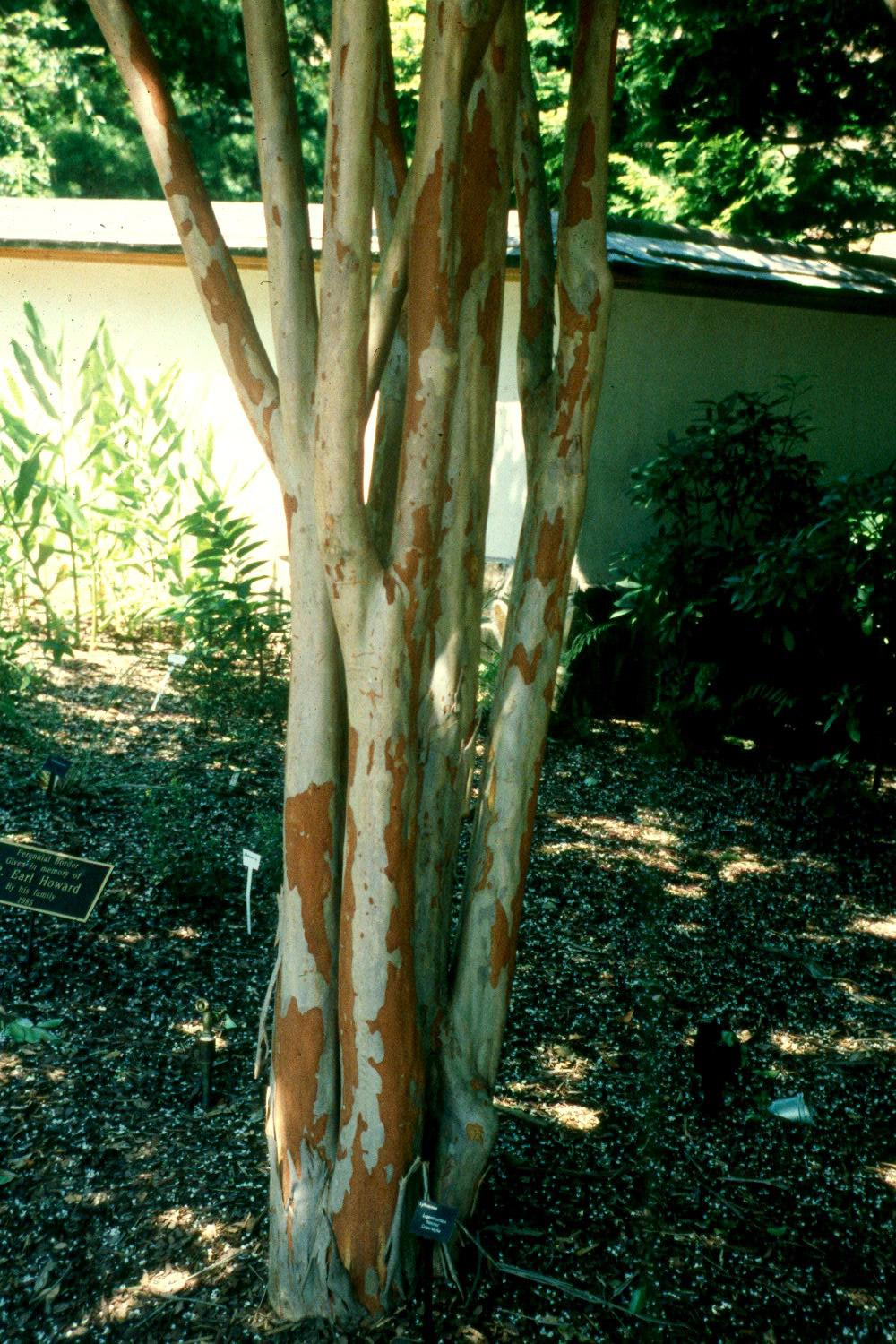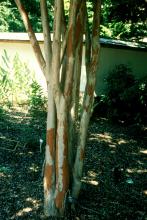Information Possibly Outdated
The information presented on this page was originally released on December 11, 2003. It may not be outdated, but please search our site for more current information. If you plan to quote or reference this information in a publication, please check with the Extension specialist or author before proceeding.
Newer crape myrtles offer beauty all year
By Norman WinterMSU Horticulturist
Central Mississippi Research & Extension Center
Winter is not normally the time to tout the virtues of the crape myrtle unless you have newer varieties. Several of the new hybrids have bark that is really something special in the winter landscape.
This hybridization primarily is between Lagerstroemia indica, the old-fashioned crape myrtle of our ancestors, and Lagerstroemia fauriei. Both are native to China, Southeast Asia and Japan.
These newer varieties offer bark that is landscape-effective all 12 months of the year. Although I say new, these crape myrtles have been around for quite a while.
Most of the crape myrtles with this eye-catching, exfoliating, mottled bark came out of the U.S. Department of Agriculture's breeding program that began in 1962. Researchers were crossing plants looking for better blooms and disease resistance. These varieties are named after Native American Indian tribes.
Some of my favorites from the standpoint of bark are Apalachee, Biloxi, Comanche, Miami, Natchez, Osage and Wichita.
Apalachee is a small variety, reaching 12 feet in height and producing 9-inch-long panicles of lavender blossoms that are gorgeous. The Apalachee's bark may best be described as cinnamon to chestnut-brown.
Biloxi is a pale pink, flowered selection prized by many home landscapers. It is a tall variety reaching 20 feet in height. The exfoliating bark reveals a dark brown color underneath.
Comanche produces coral pink flowers and reaches close to 12 feet in height. I grew this one in Mount Olive and loved its long bloom season. The exfoliating bark on this one is not as dark but still a pretty sandalwood color.
Miami is a taller variety reaching 16 feet by year 12. It produces dark pink blossoms and dark chestnut-brown inner bark.
Natchez is a 21-foot-tall white blooming selection and a Mississippi Medallion award winner. The deep cinnamon brown bark develops around the fifth year.
Osage is a light pink selection than can be grown as a large shrub or small tree reaching 12 feet in height. As the bark sheds, it reveals a mottled chestnut-brown look.
Wichita is a picturesque light magenta variety reaching 16 feet in height. This bark is truly exceptional with a dark brown to mahogany color.
There is another attribute many overlook. These varieties are also known to have some of the best leaf coloration in the fall as the green gives way to burgundy, orange, red and yellow.
If you have not pruned your crape myrtles, please do not top them. Don't cut any branches larger in diameter than a nickel. Remove any internal twiggy growth, crisscrossing branches, suckers and seedpods.
You have to admit the winter landscape is made much more beautiful with the addition of trees with beautiful bark like the river birch, which is great and, I think, equaled by the crape myrtle.
If your crape myrtles don't have exfoliating, colorful bark, then talk to the folks at the local garden nursery. The time of going to the garden center and buying a crape myrtle by color instead of variety is over. Look for newer selections named for Native American Indian tribes like the ones I have mentioned.



